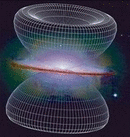Computing Across the Physics Curriculum
[an error occurred while processing this directive]
[an error occurred while processing this directive]
-->
Quantum Mechanics

You must be a registered user to access the downloads.
These modules were designed/constructed based on the text:
Introduction to Quantum Mechanics, by D. Griffiths.
-
Uncertainty Principle: The uncertainty principle is one of the most basic ideas in quantum mechanics. Student understanding of this topic is vital to understanding more advanced principles.
-
Infinite Square Well: Most often, the first problem that students encounter in quantum mechanics is the one dimensional infinite square well. It provides a simple example of the Schrodinger equation and how it is solved to give a wave function. It is a problem that every student sees, and is arguably the most basic of all quantum mechanics problems with physically interesting results.
-
Double Square Well: The double square well potential is an excellent example of a problem that has useful application but that is fairly difficult to solve analytically given the time constraints of the class. An electron orbiting two molecules can be modeled to first approximation by a double square well potential.
-
Quantum Tunneling: A particle incident on a potential barrier is a standard problem in quantum mechanics. Here, the difference between classical and quantum mechanics becomes very apparent. While it is impossible for a classical particle to tunnel through a potential barrier that is greater than the energy of the particle, quantum mechanics allows for the possibility of the wavefunction to leak into classically forbidden regions, allowing the particle to tunnel through the barrier.
-
Spherical Harmoonic: Any wave function can be expanded in terms of spherical harmonics. This is especially useful with states that exhibit spherical symmetry. Thus it is useful for students to develop a good understanding of the spherical harmonic functions.
-
Pauli Matrix: Decomposing a state into a certain basis is a basic idea in quantum mechanics. In order for students to understand Heisenbergs matrix mechanics, students must be comfortable in switching from one basis to another. The Pauli spin matrices plus the identity matrix, offers a simple set of complete basis states to decompose a 2x2 matrix.
-
Maxwell-Boltzmann Distribution: Students learn of Fermi-Dirac and Bose-Einstein statistics in quantum mechanics. However, it is useful to first review the classical distribution of Maxwell-Boltzmann. This enables students to see differences between classical and quantum distributions, as well as when it is valid to approximate gases classically.
-
Fermi-Dirac Distribution: Students learn of the Fermi-Dirac in quantum mechanics. This has wide application in a host of quantum mechanical systems where classical distributions such as the Maxwell-Boltzmann distribution fail. Understanding the Fermi-Dirac distribution allows students to see under what conditions, the (fermion) gas can be treated classically, and when it must be treated quantum mechanically, such as electrons in the conduction band of a metal at room temperature.
-
Bose-Einstein Distribution: Students learn of the Bose-Einstein distribution in quantum mechanics. This has application in quantum mechanical systems describing a boson gas, such as photons or phonons, where other distributions, such as Maxwell-Boltzmann or Fermi-Dirac distributions, would fail.
